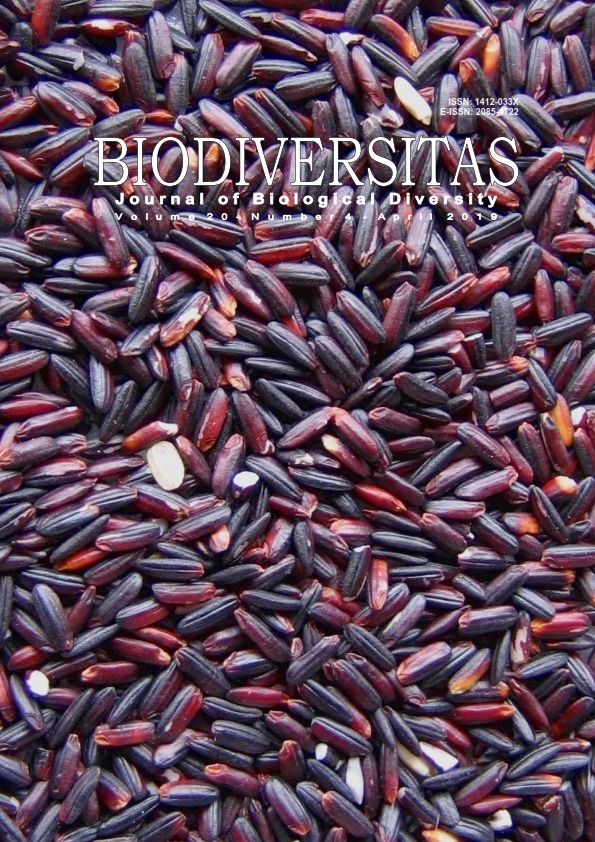Short Communication: Growth patterns of Shorea leprosula and Dryobalanops lanceolata in Borneo’s forest managed with Selective Cutting with Line Replanting System
##plugins.themes.bootstrap3.article.main##
Abstract
Abstract. Tirkaamiana MT, Partasasmita R. Kamarubayana L. 2019. Growth patterns of Shorea leprosula and Dryobalanops lanceolata in Borneo’s forest managed with Selective Cutting with Line Replanting System. Biodiversitas 20: 1160-1165. Dryobalanops lanceolata is a species of plant in the family Dipterocarpaceae, which indigenous of Borneo. It is found in at least five protected areas (Kabilli-Sepilok Forest Reserve, Danum Valley Conservation Area, Ulu Temburong, Lambir, and Gunung Mulu National Parks), but is threatened elsewhere due to habitat loss. The demand for its timber is very high, so it requires conservation efforts while at the same time maintaining its productivity to meet the timber demand. One of the efforts to increase productivity of production forest in Indonesia is implementing Selective Logging with Line Replanting System (TPTJ). In this system superior species are planted in the planting lines. This study aimed to determine the growth of Shorea leprosula and Dryobalanops lanceolata planted in different planting line widths. Data of diameter increment of S. leprosula and D. lanceolata were obtained by observing 4 permanent sample plots (PUP) at concession areas of PT Balikpapan Forest Industries in Penajam Paser Utara, East Kalimantan, Indonesia. The results showed that the average diameter increment of S. leprosula and D. lanceolata at the planting line width of 3 meters was 1.47cm/yr and 0.74 cm/yr respectively, and at the planting line width of 6 meters was 2.08 cm/yr and 1.14 cm/yr respectively. The differences in planting line width had very significant effect on the growth and diameter increment of S. leprosula, presumably due to the increase of light intensity to optimal level which accelerates stomata opening and transpiration rate, thus affecting the rate of photosynthesis.
